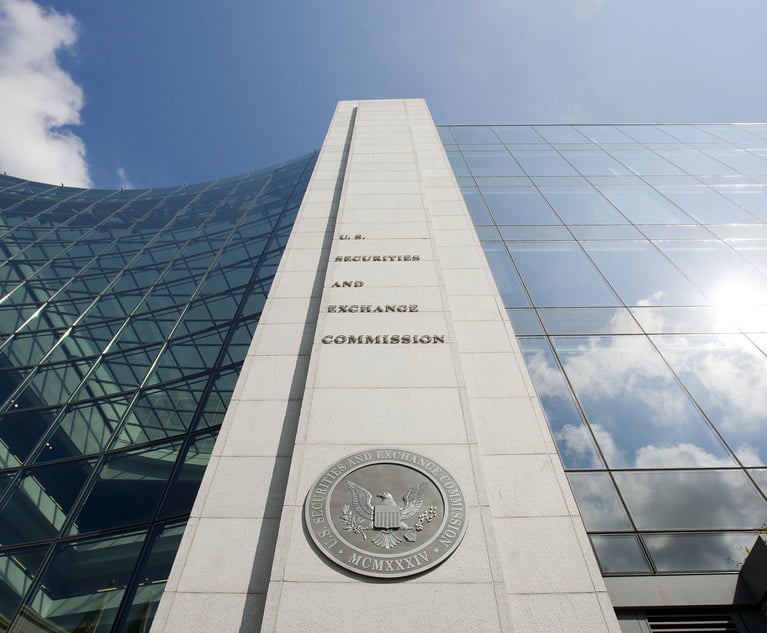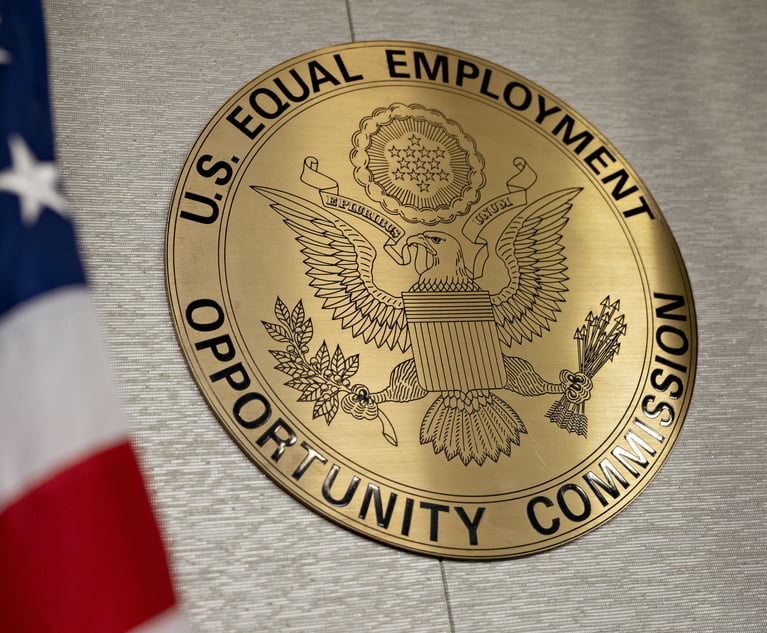Facts & Figures: Organizational changes can increase risk of misconduct
From law firm growth strategies to an anticipated rise in mergers, an inside look at the numbers that count
June 07, 2013 at 09:54 AM
11 minute read
The original version of this story was published on Law.com

Social Strategy
It seems that every year lawyers and executives are becoming more and more savvy about social media usage, and some are applying that expertise to the realm of mergers and acquisitions. Fasken Martineau's 2013 Social Media M&A survey shows that a substantial percentage of senior M&A executives surveyed used social media platforms to research potential acquisition targets, as well as parties to transactions.
Most execs don't plan to develop a specific social media strategy for M&A, but Fasken Martineau notes that those percentages may change following the Securities and Exchange Commission's announcement that companies are now permitted to share market-moving news on social media.
36% Respondents who used social media to investigate potential acquisition targets in the past year
48% Executives who used social media to research companies involved in transactions
72% Respondents who said that LinkedIn added the most value to due diligence, rather than other social platforms
77% Executives who do not have a social media strategy specifically geared toward M&A

Compliance Challenges
Regulatory enforcement is a major challenge for companies nationwide, as indicated by a growth in federal whistleblower programs and an uptick in prosecutions for violations of the Foreign Corrupt Practices Act and other laws.
Now a new study from CEB shows that workplace changes such as layoffs, leadership overhauls and organizational restructuring—seemingly perennial occurrences in the current economic climate—can increase the risk of misconduct, especially if employees are left uninformed about such shifts.
84% Workers who have experienced a recent change in their business operations
42% Potential decrease in misconduct risk at companies who inform employees in advance about organizational changes
7.9% Shareholder returns of companies who communicate effectively with their employees
2.1% Shareholder returns of companies who do not practice effective communication strategies
This content has been archived. It is available through our partners, LexisNexis® and Bloomberg Law.
To view this content, please continue to their sites.
Not a Lexis Subscriber?
Subscribe Now
Not a Bloomberg Law Subscriber?
Subscribe Now
NOT FOR REPRINT
© 2025 ALM Global, LLC, All Rights Reserved. Request academic re-use from www.copyright.com. All other uses, submit a request to [email protected]. For more information visit Asset & Logo Licensing.
You Might Like
View All

Trending Stories
- 1How Some Elite Law Firms Are Growing Equity Partner Ranks Faster Than Others
- 2Fried Frank Partner Leaves for Paul Hastings to Start Tech Transactions Practice
- 3Stradley Ronon Welcomes Insurance Team From Mintz
- 4Weil Adds Acting Director of SEC Enforcement, Continuing Government Hiring Streak
- 5Monday Newspaper
Who Got The Work
J. Brugh Lower of Gibbons has entered an appearance for industrial equipment supplier Devco Corporation in a pending trademark infringement lawsuit. The suit, accusing the defendant of selling knock-off Graco products, was filed Dec. 18 in New Jersey District Court by Rivkin Radler on behalf of Graco Inc. and Graco Minnesota. The case, assigned to U.S. District Judge Zahid N. Quraishi, is 3:24-cv-11294, Graco Inc. et al v. Devco Corporation.
Who Got The Work
Rebecca Maller-Stein and Kent A. Yalowitz of Arnold & Porter Kaye Scholer have entered their appearances for Hanaco Venture Capital and its executives, Lior Prosor and David Frankel, in a pending securities lawsuit. The action, filed on Dec. 24 in New York Southern District Court by Zell, Aron & Co. on behalf of Goldeneye Advisors, accuses the defendants of negligently and fraudulently managing the plaintiff's $1 million investment. The case, assigned to U.S. District Judge Vernon S. Broderick, is 1:24-cv-09918, Goldeneye Advisors, LLC v. Hanaco Venture Capital, Ltd. et al.
Who Got The Work
Attorneys from A&O Shearman has stepped in as defense counsel for Toronto-Dominion Bank and other defendants in a pending securities class action. The suit, filed Dec. 11 in New York Southern District Court by Bleichmar Fonti & Auld, accuses the defendants of concealing the bank's 'pervasive' deficiencies in regards to its compliance with the Bank Secrecy Act and the quality of its anti-money laundering controls. The case, assigned to U.S. District Judge Arun Subramanian, is 1:24-cv-09445, Gonzalez v. The Toronto-Dominion Bank et al.
Who Got The Work
Crown Castle International, a Pennsylvania company providing shared communications infrastructure, has turned to Luke D. Wolf of Gordon Rees Scully Mansukhani to fend off a pending breach-of-contract lawsuit. The court action, filed Nov. 25 in Michigan Eastern District Court by Hooper Hathaway PC on behalf of The Town Residences LLC, accuses Crown Castle of failing to transfer approximately $30,000 in utility payments from T-Mobile in breach of a roof-top lease and assignment agreement. The case, assigned to U.S. District Judge Susan K. Declercq, is 2:24-cv-13131, The Town Residences LLC v. T-Mobile US, Inc. et al.
Who Got The Work
Wilfred P. Coronato and Daniel M. Schwartz of McCarter & English have stepped in as defense counsel to Electrolux Home Products Inc. in a pending product liability lawsuit. The court action, filed Nov. 26 in New York Eastern District Court by Poulos Lopiccolo PC and Nagel Rice LLP on behalf of David Stern, alleges that the defendant's refrigerators’ drawers and shelving repeatedly break and fall apart within months after purchase. The case, assigned to U.S. District Judge Joan M. Azrack, is 2:24-cv-08204, Stern v. Electrolux Home Products, Inc.
Featured Firms
Law Offices of Gary Martin Hays & Associates, P.C.
(470) 294-1674
Law Offices of Mark E. Salomone
(857) 444-6468
Smith & Hassler
(713) 739-1250







